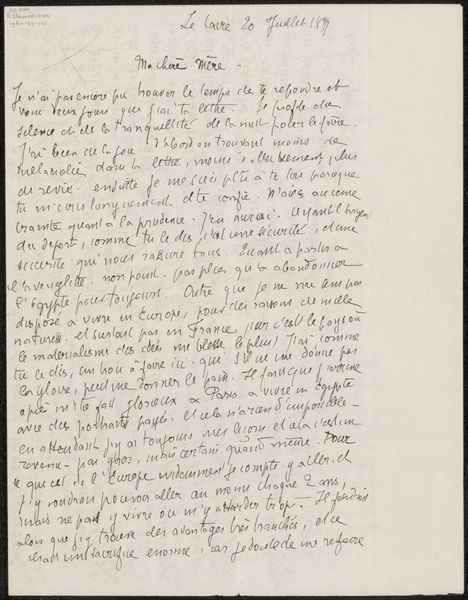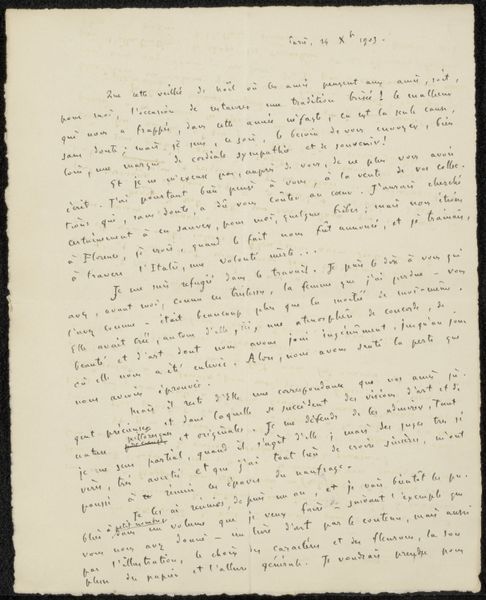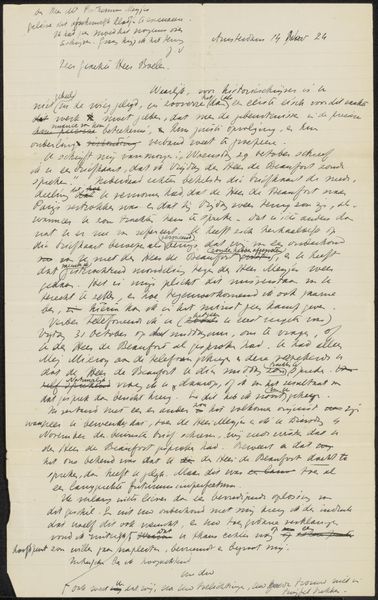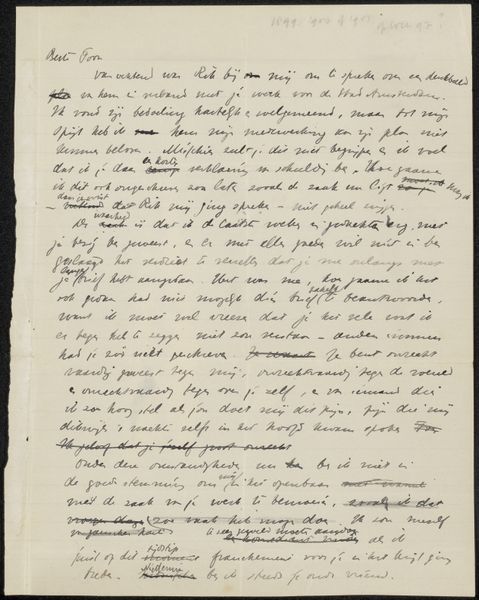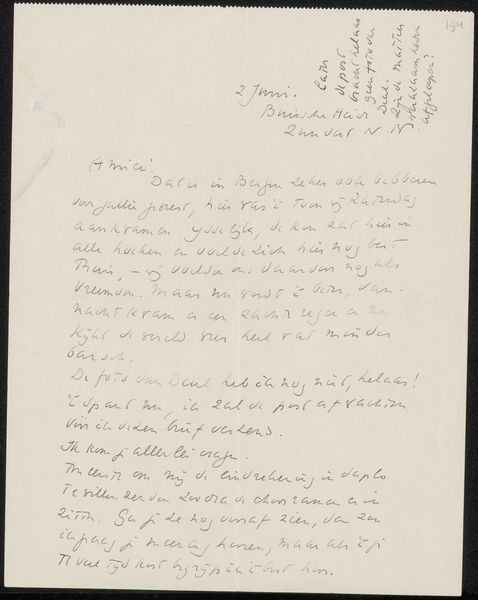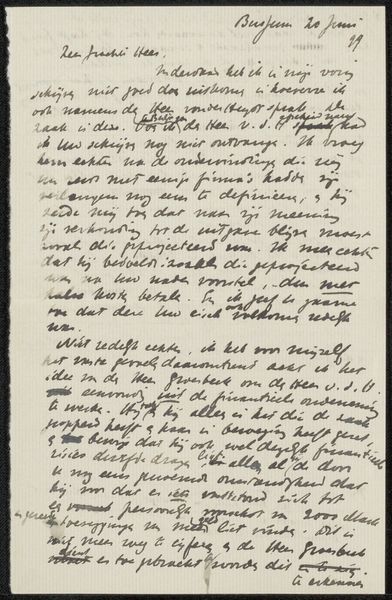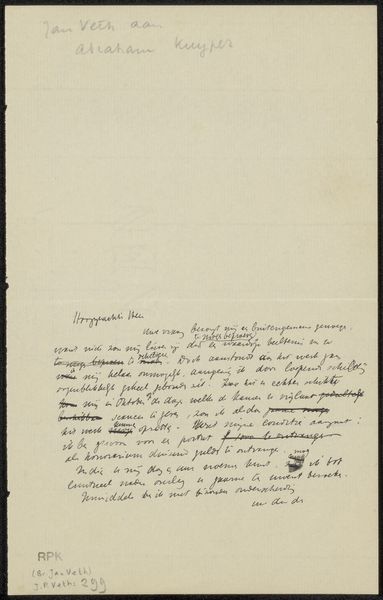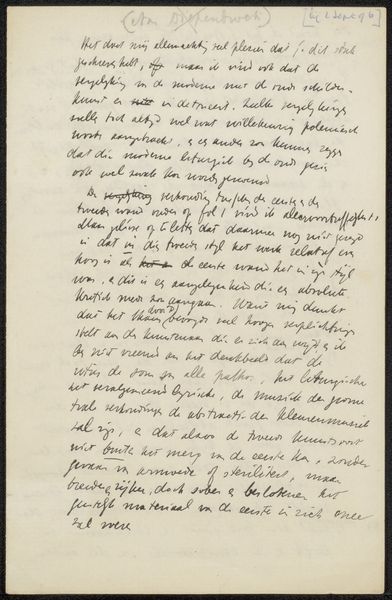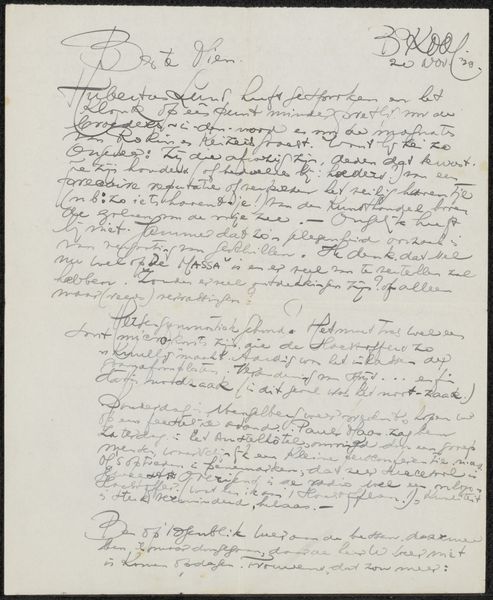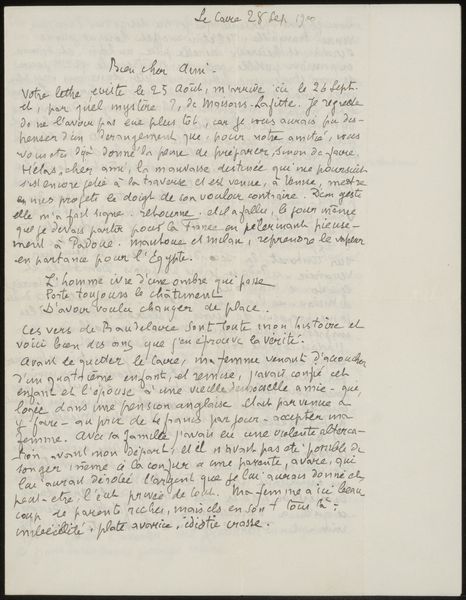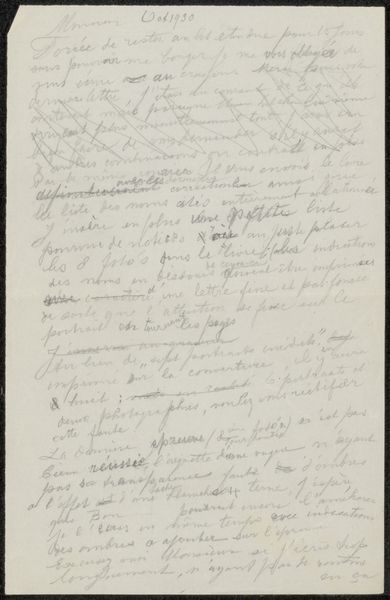
drawing, textile, paper, ink, pen
#
drawing
#
hand-lettering
#
hand drawn type
#
hand lettering
#
textile
#
paper
#
personal sketchbook
#
ink
#
pen-ink sketch
#
pen
Copyright: Rijks Museum: Open Domain
Curator: Let’s talk about “Brief aan Cornelis Easton,” a drawing by Jan Veth created sometime after 1925, currently held in the Rijksmuseum. It's primarily done with pen and ink on paper. Editor: Oh, it feels…intimate, like a stolen glance at someone's private thoughts. The script is densely packed and uneven. There is something hesitant, maybe vulnerable, in that handwriting. Curator: Veth was known for his portraits, but this isn’t a formal portrait at all. It is literally a letter, an actual written correspondence, thus capturing a different sort of intimacy with his subject through words. Editor: Right, and the materiality of the drawing emphasizes that personal connection. It's ink on paper; simple, direct. A far cry from marble or oil paint—this is the stuff of everyday life. It really lends itself to an interesting deconstruction, with the artistic intention blurring with the message in the text. Curator: Precisely. Consider the sociopolitical dimensions as well, the fact it's a letter to a peer probably assumes a level of education and privilege during a time of high social disparity, when most people could not read or write at all, let alone write artful letters. Editor: So, this piece kind of whispers of societal hierarchies of the time, and of a certain intellectual and artistic elite, even within the intimate act of communication, this reality stands. It also poses questions about what aspects of life is and isn't inherently political. Curator: Absolutely. Also notice that he has been correcting himself. I see cross-outs and edits, a revision of ideas happening right there on the page! Editor: The letter is not a single-voice thing then; with revisions on the page it reflects some type of active back and forth in Jan Veth’s mind, or an exchange of ideas or opinions as he commits words to the page. And it is those kinds of details which makes it all the more intriguing. Curator: For me it brings a quiet recognition that behind any piece of art—be it a painting or a simple letter—are so many other things beneath the surface. Editor: Right, seeing that history, context, those personal revisions is a powerful way to relate to something on such a deeply individual level.
Comments
No comments
Be the first to comment and join the conversation on the ultimate creative platform.
